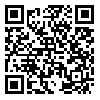BibTeX | RIS | EndNote | Medlars | ProCite | Reference Manager | RefWorks
Send citation to:
URL: http://rehabilitationj.uswr.ac.ir/article-1-534-en.html
Objective: Patients with facial palsy lose normal facial muscle movement in the paralyzed side. A condition which is treated using different methods of treatment.
Materials & Methods: Over of a period of five years, a total of 80 facial palsy cases referred to the hospital. 22 were treated by high dose of prednisolon and physiotherapy. 58 cases were treated by different surgical procedures, that 38 cases had developed the condition due to trauma, and the remaining 20 due to bell's palsy, brain tumor, or congenital conditions. Surgical procedures used in treating these patients were end to end anastomosis, nerve graft between the severed nerve, neurotization of the contralateral healthy side to the paralyzed side, and nurotization with hypoglossal or accessory nerve of the paralyzed side. Muscle transplant to the paralyzed region, such as temporal or free gracilis muscle was also used in some patients.
Results: In acute phase of bell's palsy, after head trauma or facial palsy because of very cold weather, prednisolon in high dose and neuromuscular rehabilitation for some patients showed very good results. Operative technique using nerve graft or end to end anastomosis of the severed nerve showed very good results, and neurotization of the paralyzed side to the contralateral healthy side gave acceptable to good results. The use of muscles or hypoglossal nerve of the paralyzed region did not result in symmetric facial muscle movement.
Conclusion: Our data shows the best operative technique for patients with chronic facial palsy is the use of free gracilis muscle. Patients treated with this method were able to regain their involuntary and symmetric facial muscle movement.
Received: 8/08/2010 | Accepted: 14/10/2015 | Published: 14/10/2015
| Rights and permissions | |
 |
This work is licensed under a Creative Commons Attribution-NonCommercial 4.0 International License. |





